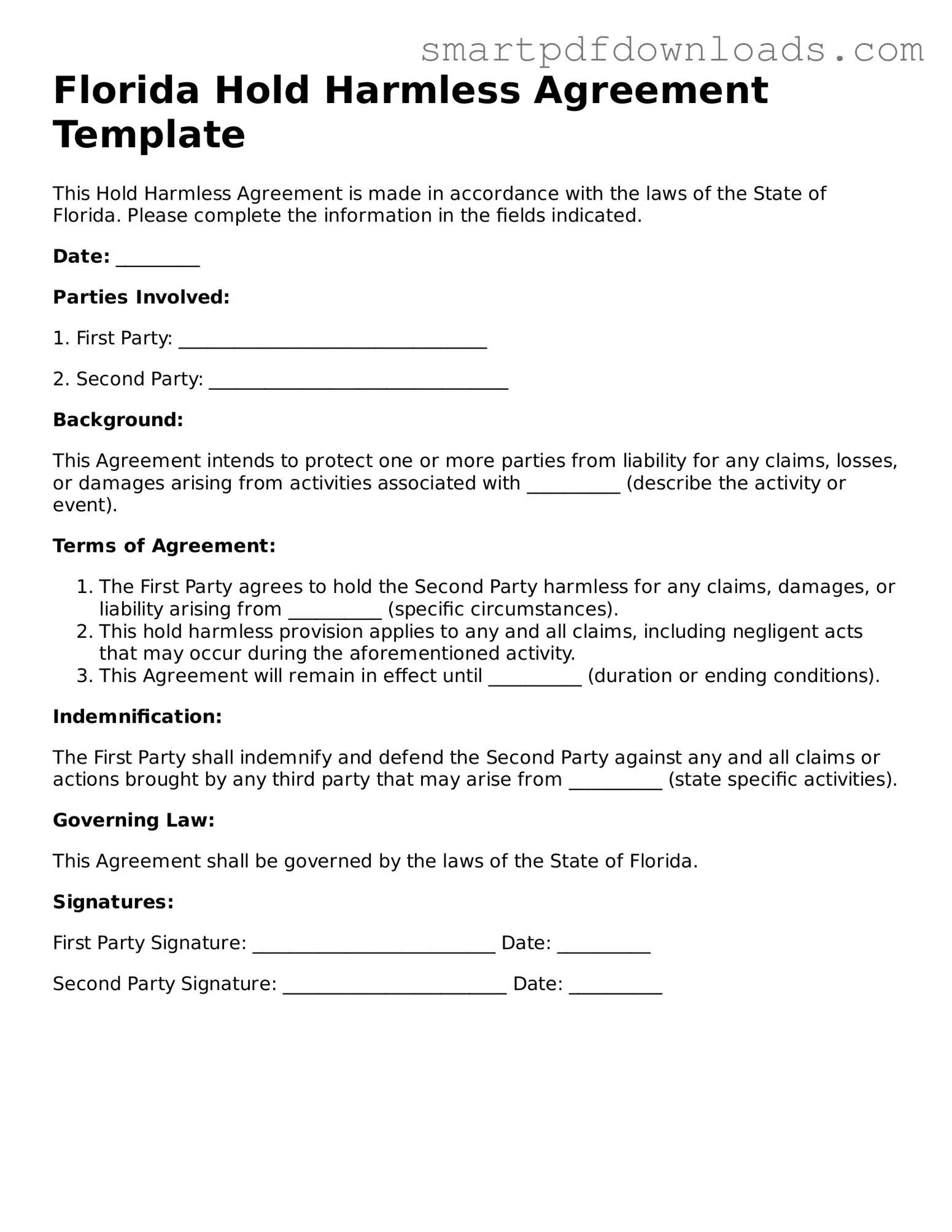Florida Hold Harmless Agreement Template
This Hold Harmless Agreement is made in accordance with the laws of the State of Florida. Please complete the information in the fields indicated.
Date: _________
Parties Involved:
1. First Party: _________________________________
2. Second Party: ________________________________
Background:
This Agreement intends to protect one or more parties from liability for any claims, losses, or damages arising from activities associated with __________ (describe the activity or event).
Terms of Agreement:
- The First Party agrees to hold the Second Party harmless for any claims, damages, or liability arising from __________ (specific circumstances).
- This hold harmless provision applies to any and all claims, including negligent acts that may occur during the aforementioned activity.
- This Agreement will remain in effect until __________ (duration or ending conditions).
Indemnification:
The First Party shall indemnify and defend the Second Party against any and all claims or actions brought by any third party that may arise from __________ (state specific activities).
Governing Law:
This Agreement shall be governed by the laws of the State of Florida.
Signatures:
First Party Signature: __________________________ Date: __________
Second Party Signature: ________________________ Date: __________
